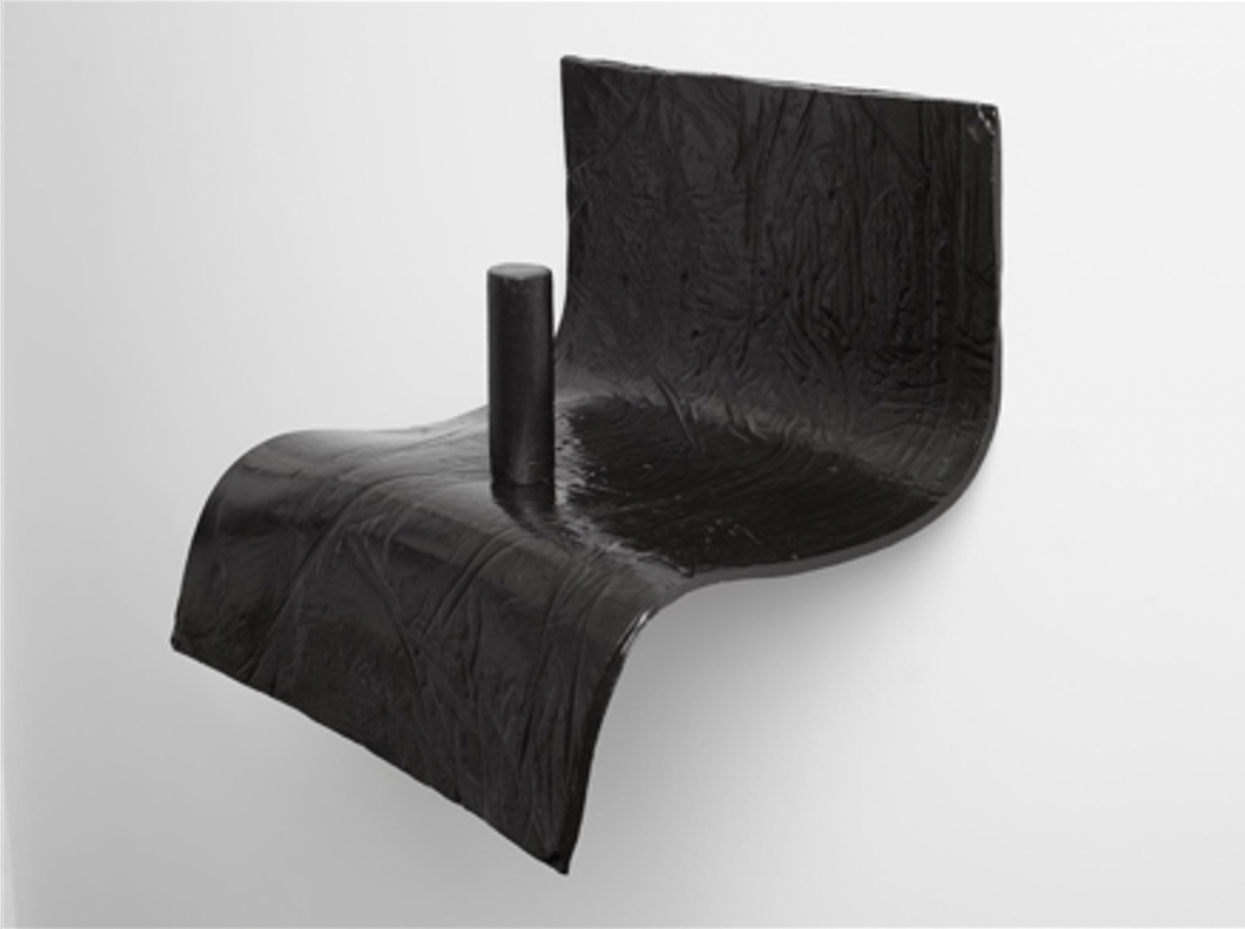A Historical Dance of New Media

Image credit: Eduardo Costa, accidental intersection of cylinder and a fluid plane, 2008, solid acrylic paint
An Art, Technology, and Culture Colloquium lecture, presented as part of BCNM's Latinx & Latin American Media Ecologies program and co-sponsored by the Department of Art Practice
with Eduardo Costa
Artist
In the early 1990s, in my studio, I took a jar of yellow acrylic paint and I realized it had inside a piece of dried up paint. The lid hadn’t been tightened properly. I shook the jar and the piece of very dry paint went sideways, knocking on the walls. I experienced the anxiety of having that accidental piece of material in my hand. After more shaking, it came out of the jar and I was able to hold it. I felt a new kind of happiness—the happiness of deep discovery. Something great and new had been made by Accident, a possible usage of paint that hadn’t been used before. Then I thought, "Is this a painting with volume or a sculpture made of paint?" I was already coming from the subconscious language of my mind to the realm of consciousness. A whole new world of possibilities opened to me as a painter.
About Eduardo Costa
Eduardo Costa (born 1940, Buenos Aires) is an Argentine artist who lived 20 years in New York City and five in Rio de Janeiro and Bahia, Brazil. He started his art making in Buenos Aires, and continued to work in New York City, where he made a strong contribution to the local avant-garde. He became part of an informal group of American artists, among them Vito Acconci, Scott Burton, Dan Graham, John Perreault, Marjorie Strider, and Hannah Weiner. In Brazil, he participated in projects and interacted intensely with Hélio Oiticica, Lygia Pape, Antonio Manuel, Lygia Clark, and others from the school of Rio.
His work has been discussed in Art in America, Art Forum, Flash Art, and in the main books on conceptual art: A. Alberro, MIT Press, 1999; P. Osborne, Phaedon, 2002; Mari Carmen Ramírez and Héctor Olea, Yale/Houston Museum of Art, 2004; Inés Katzenstein, MoMA, NYC, 2004, Luis Pérez-Oramas and others, San Antonio Museum of Art, 2004; Luis Camnitzer, University of Texas, 2007, Real-to-Reel: Social Indexicality, Sonic Materiality, and Literary Media Theory, Tom McEnaney, 2017; Queer Behavior, David Getsy, 2022.
In 2017, the Tamayo Museum in Mexico City had a retrospective exhibition of Costa´s work, "Mental Relations," curated by M. Moscoso and S. Villanueva (substantial catalog available).
His art is represented in the following collections: MoMA, NYC; The Metropolitan Mus, NYC; Guggenheim Mus, NYC; Museum of Modern Art, RJ; Museum of Fine Arts, BA; Jumex Collection, México DF; Museo Centro de Arte Reina Sofía, Madrid; Banco Mercantil, Caracas; Blanton Museum, TX, MALBA, BA; and other institutional and private collections.
He has exhibited at the New Museum, NYC; MoMA, NYC; Victoria and Albert Museum, London; Museo Centro de Arte Reina Sofía, Madrid; MIT’s List Visual Arts Center, Mass; Miami Art Museum, Miami; Jumex Found, Mexico City; Vienna Secession, Vienna; Lisson Gallery, London; Museum of Modern Art, Rio de Janeiro; Museum of Modern Art, Sao Paulo; Museum of Modern Art, BA; National Museum of Fine Arts, BA; Malba, BA; Museo Tamaya, México City, and others. He lives and works in the Internet, and in Buenos Aires.
More Info
Click here for the full 2023-24 Art, Technology, and Culture Colloquium season.
Click here for the full 2023-24 Latinx & Latin American Media Ecologies season.
Accessibility
BCNM events are free and open to the public. This event will be held in-person, on the UC Berkeley campus. We strive to meet all access and accommodation needs. Please contact info.bcnm [at] berkeley.edu with requests or questions.
BCNM is proud to make conversations with leading scholars, artists, and technologists freely available to the public. Please help us continue this tradition by making a tax-deductible donation today. If you are in the position to support the program, we suggest $5 per event, or $100 a year.
